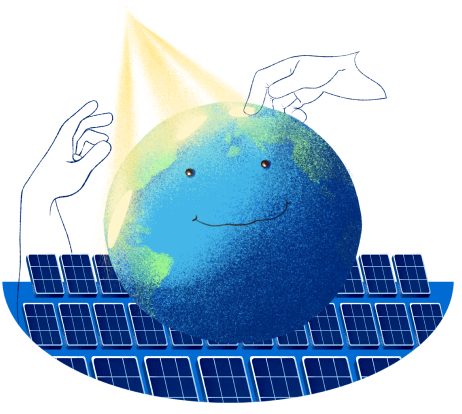What is clean energy, and why does it matter now more than ever? As electricity demand surges, switching to clean energy sources like solar energy, hydro power, and wind energy can reduce nearly 25% of global greenhouse gas emissions. With rising concerns about the cost of clean energy and growing investment in renewable power like tidal and geothermal energy, understanding the full picture helps us move toward a healthier, more sustainable world
What Is Clean Energy and Why Does It Matter More Than Ever
As the world becomes more electrified, the rising electricity demand is unlikely to abate anytime soon. By replacing highly polluting energy sources such as coal, natural gas, oil, and others with clean energy sources, the world can work to eliminate nearly 25% of global greenhouse gas emissions, if not more.
Clean energy helps eliminate hazardous smog, toxic buildup in our air and water, and the harmful effects of coal and gas production. It provides consistent electricity, enables fuel diversification, and reduces the risk of environmental disasters like fuel spills and gas leaks.
Clean vs Green vs Renewable: What’s the Difference?
The terms clean, green, and renewable energy are often used interchangeably, but they have key differences:
-
Clean Energy:
Zero-emission power sources (like solar or nuclear) that don’t pollute the air or water.
-
Green Energy:
Typically refers to natural sources like wind, sun, or biofuels. However, not all green energy is clean (for example, burning wood is green but not always clean).
-
Renewable Energy:
Any source that can naturally replenish, like sunlight, wind, or water flow.
Nuclear power is clean, but not typically considered green. Firewood is green, but not clean. Understanding these distinctions helps clarify what clean energy is and its role in sustainable power generation.
Major Sources of Clean and Renewable Energy
Let’s break down the most impactful types of clean energy that are shaping our future.
Solar Power: The Most Abundant Clean Energy Source
Solar energy is sunlight converted into usable power. The sun delivers enough energy to the Earth in one hour to power the entire planet for a year.
- Technologies like solar panels and concentrated solar power (CSP) plants help capture this energy.
- Solar energy is 100% clean, emission-free, and scalable for everything from homes to massive solar farms.
- It’s among the most widely adopted sources of clean energy in India and globally.
Wind Power: Harnessing Natural Air Currents
Wind energy is one of the fastest-growing renewable energy technologies in the world.
- Large wind turbines, both onshore and offshore, convert air movement into electricity.
- Countries like China, the U.S., Germany, and India are leading producers.
- Wind is clean, doesn’t emit pollutants, and supports large-scale energy needs.
Hydro Energy: Clean Electricity From Flowing Water
Hydropower uses falling or fast-moving water to generate electricity.
- It transforms the gravitational potential of water into kinetic energy and then into electricity.
- As one of the oldest sources of renewable energy, it plays a major role in global clean power production.
Tidal Energy: Power From Ocean Tides
Tidal power is generated by the gravitational interactions between the Earth, the moon, and the sun, causing predictable rises and falls in sea levels.
- Though less consistent than hydro energy, it’s highly predictable.
- Still developing globally, tidal energy represents an exciting frontier in clean energy systems.
Geothermal Power: Earth’s Inner Heat
Geothermal energy taps into the heat from beneath the Earth’s surface to create electricity.
- Steam produced from underground reservoirs powers turbines and generators.
- It’s one of the cleanest, low-carbon renewable energy sources.
- Its main limitation: geothermal sites are location-specific and not accessible in all regions.

Is Clean Energy Expensive? Understanding the Cost
While the cost of clean energy used to be a major concern, technological advancements have made it increasingly affordable.
- Solar and wind are now among the cheapest forms of electricity to produce per kWh.
- Government subsidies and clean energy incentives further reduce costs for homeowners and businesses.
- Clean energy also reduces long-term environmental and health costs associated with pollution and fossil fuel dependence.
Conclusion: Why Clean Energy Is the Power of Tomorrow
So, what is clean energy really about? It’s about giving future generations a planet that still works. From solar panels on rooftops to turbines in oceans, the sources of clean energy are more accessible and impactful than ever. With the rising urgency around climate change, renewable and clean energy technologies offer the most promising route to sustainable growth, energy independence, and a pollution-free future.





